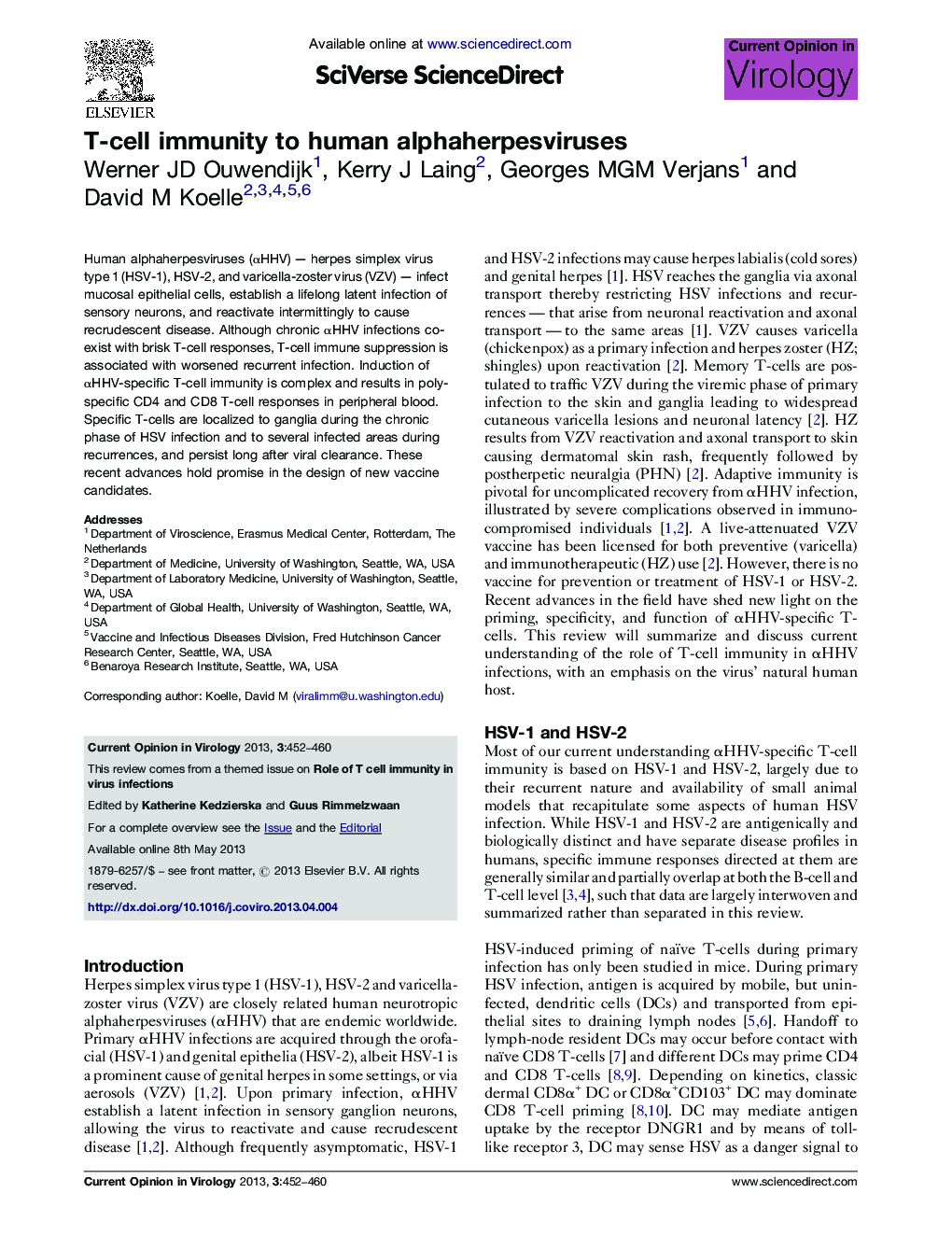| Article ID | Journal | Published Year | Pages | File Type |
|---|---|---|---|---|
| 5806870 | Current Opinion in Virology | 2013 | 9 Pages |
â¢HSV T-cell immunity relies on multiple DC subsets and CD4/CD8 T-cell cooperation.â¢Diverse CD4/CD8 responses to HSV-1 are accessible with genome-spanning tools.â¢HSV-specific T-cells localize to mucosal epithelia during recurrent infections.â¢HSV-1-specific T-cells localize to ganglia during chronic latent infection.â¢VZV reactivation induces systemic and ganglionic T-cell responses.
Human alphaherpesviruses (αHHV) - herpes simplex virus type 1 (HSV-1), HSV-2, and varicella-zoster virus (VZV) - infect mucosal epithelial cells, establish a lifelong latent infection of sensory neurons, and reactivate intermittingly to cause recrudescent disease. Although chronic αHHV infections co-exist with brisk T-cell responses, T-cell immune suppression is associated with worsened recurrent infection. Induction of αHHV-specific T-cell immunity is complex and results in poly-specific CD4 and CD8 T-cell responses in peripheral blood. Specific T-cells are localized to ganglia during the chronic phase of HSV infection and to several infected areas during recurrences, and persist long after viral clearance. These recent advances hold promise in the design of new vaccine candidates.
